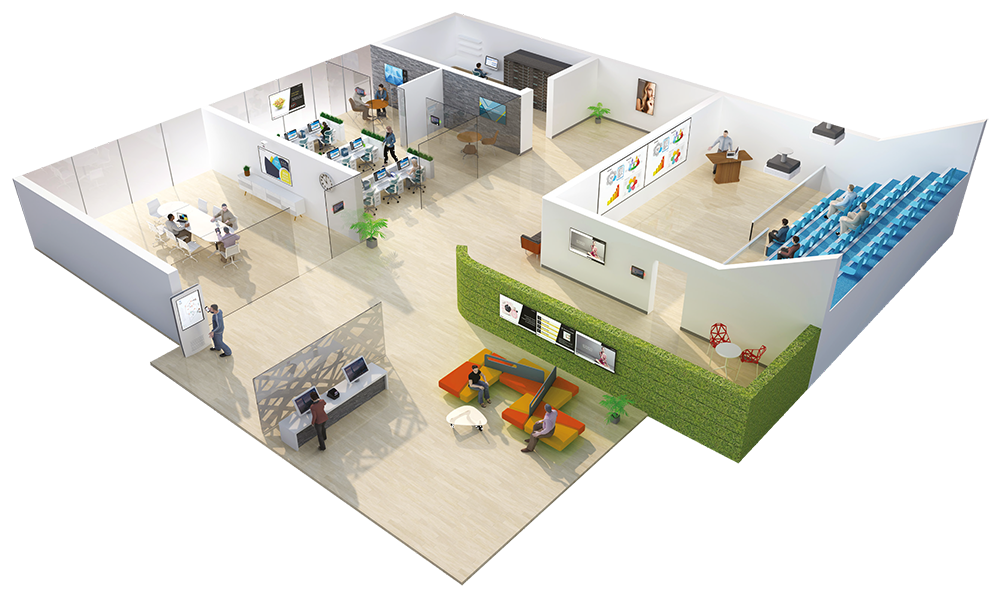4 office habits that will have to change

Three in four CFOs plan to shift at least five percent of previously on-site employees to permanently remote positions after COVID-19, according to latest research by Gartner.
While organisational structures are rapidly changing, many employees are returning to the office. But before we find a vaccine, returning employees face an entirely new reality.
Here are four office habits that will change because of COVID-19.
Fewer spontaneous meetings
Until a COVID-19 vaccine brings widespread immunity, safe distancing practices will remain in effect. As a result, meetings will have to be carefully organised to keep people safe.
This means that rooms will need to be pre-booked in advance to factor in cleaning measures and worker health checks, and employees won’t be able to ‘jump in a room’ to hash out their ideas. Also, companies will probably want to keep logs of attendees in case they need to ‘contact trace’ people in the event of a possible exposure to the virus.
For this to be effective, a streamlined room booking system like TEOS Book is essential. Employees can identify which rooms are available and what maximum capacities are under new safety protocols, all from a singular device. This way, they can avoid double bookings and wasted time.

Digital notifications will continue to trend
It took communication company, Slack, a matter of weeks to acquire another 2.5 million users on its platform in March 2020.
Since COVID-19, every single business has been forced to digitise their processes. But digital communication can come with negative side effects, including:
- Habitual device checking;
- More notifications; and
- Increased anxiety.
Employees who once sat two desks apart are now working remotely, and instead of engaging in person, they’re sending more messages, more emails, and organising more video calls. Even if people are going into the office, they may be more spread out or working on alternate days.
Given that Zoom fatigue is a real thing, companies will have to introduce strategies like ‘quiet times’, where employees aren’t expected to respond to certain notifications.

Employee health checks will become the norm
Many workers are required to go through virus screenings before attending the office. Symptom-checking apps and fever-screening cameras ensure that sick workers stay home, helping to reduce the spread of the virus.
Health company, Fitbit, for example, make all employees complete a daily symptom check via an app. The company can then visually monitor employees’ health via a dashboard.
While effective, there are long-term concerns surrounding privacy and data protection, and there are questions as to whether these technologies will remain even after a vaccine is available.


Stricter hot desking rules
Hot desks face scrutiny. On the one hand, they’re effective for employees who now work flexibly. On the other, they pose a hygiene risk and will require deep cleaning between use.
Keeping track of who has booked which desk, though, is complicated without a centralised administration. For hot desking to be effective, organisations will have to turn to tools like TEOS by Sony for wayfinding and hot desk booking.
TEOS gives employees transparency over which desks are booked and which are in use or undergoing cleaning. This avoids any unnecessary cross contamination of workspaces.
This ‘new normal’ is here to stay
Even after a vaccine has be discovered, work will never look the same again. Companies like Facebook, for example, are shifting tens of thousands of jobs to permanently remote, and many employees will rarely return to the office for the rest of their careers.
We anticipate companies adopting a ‘hybrid office’ that blends the best of the new physical office environment with remote working and flexible work patterns and which supports the employee health and safety measures imposed by coronavirus.
To support operational changes like this, it requires the right technology. Sony TEOS gives you the ability to orchestrate your workplace from one central location.
From personalised signage, to desk and room booking systems, to better collaboration, our platform lets you streamline your office and remain just as productive as before, regardless of who’s working from where.

TEOS Solutions
TEOS is our complete suite of workplace management solutions. Achieve efficiency, insight and impact through complete workplace control. Optimise how your organisation uses devices, space and time to unlock the true potential of your workforce.

